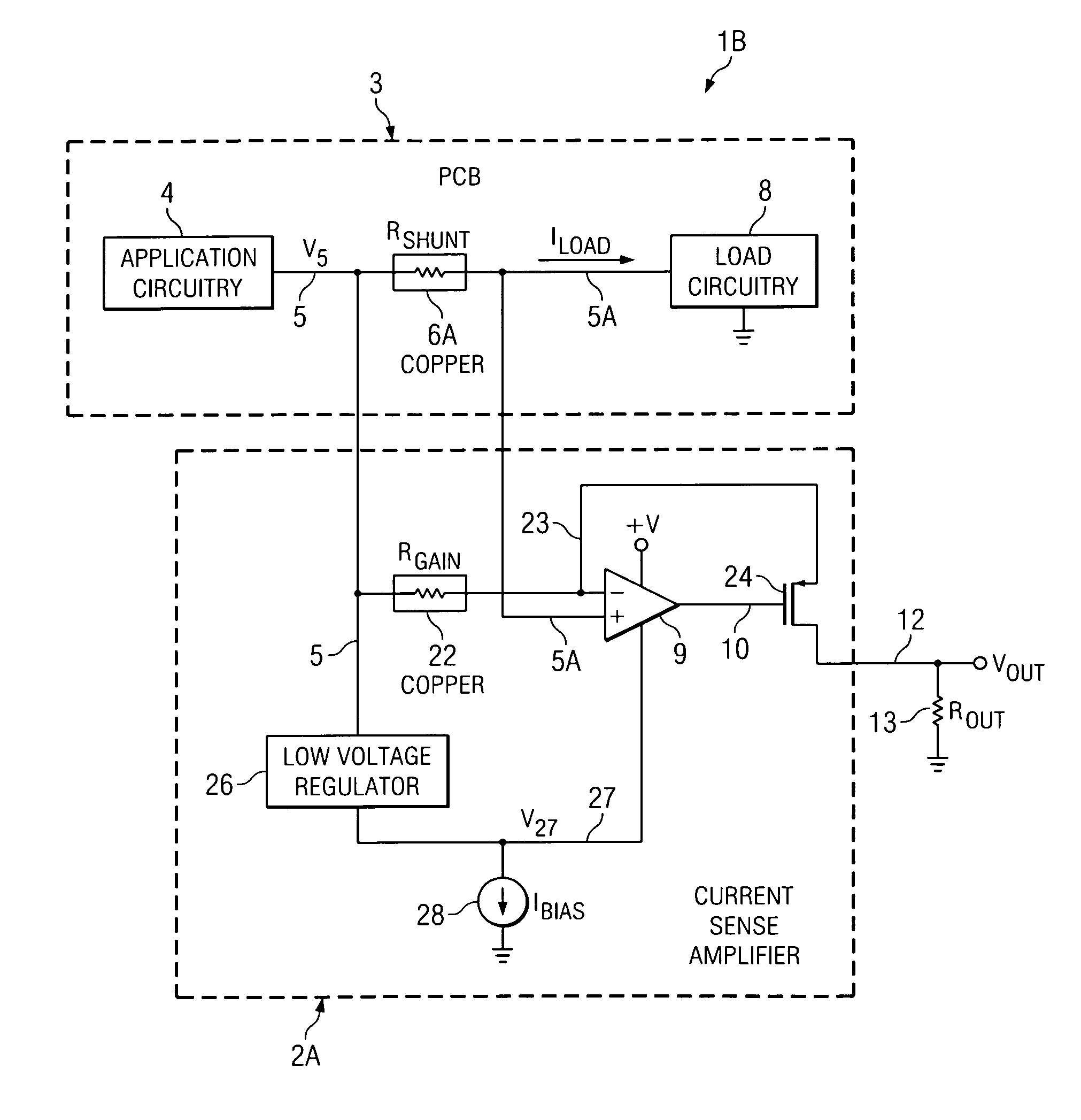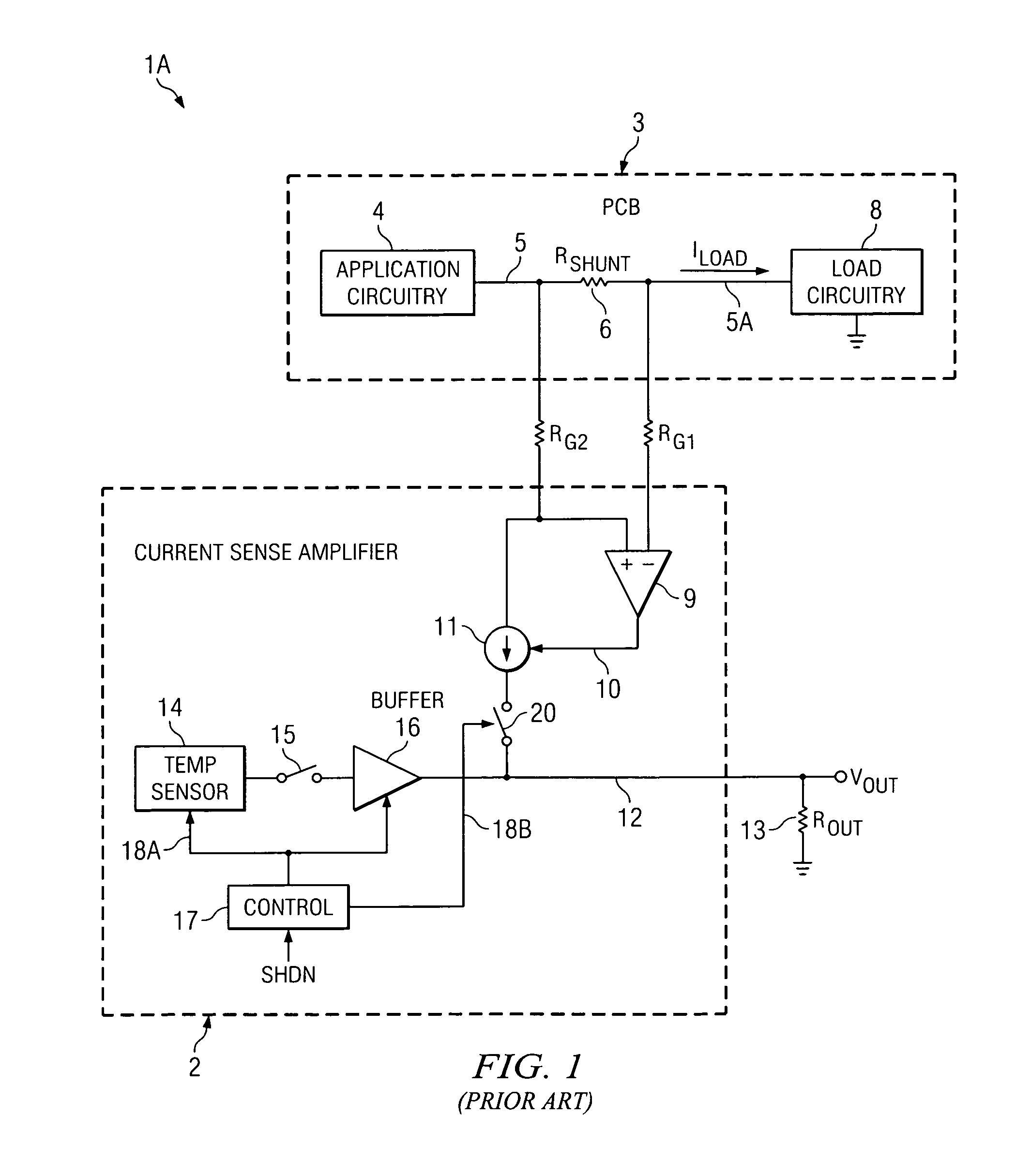Amplifier topology and method for connecting to printed circuit board traces used as shunt resistors
- Summary
- Abstract
- Description
- Claims
- Application Information
AI Technical Summary
Benefits of technology
Problems solved by technology
Method used
Image
Examples
Embodiment Construction
[0027]Referring to FIG. 2, circuitry 1B includes a current sensing amplifier 2A connected to measure the voltage drop produced across shunt resistor 6A by load current ILOAD. Printed circuit board 3 includes application circuitry 4 connected by copper trace conductor 5 to one terminal of shunt resistor 6A. Application circuitry 4 produces a voltage V5 on copper trace conductor 5. The other terminal of shunt resistor 6A is connected by copper trace conductor 5A to load circuitry 8, which may be located on or off printed circuit board 3. Shunt resistor 6A, which has a resistance RSHUNT, preferably is a section of a copper trace conductor 5,6A,5A which also includes copper trace conductors 5 and 5A on printed circuit board 3.
[0028]By way of definition, if shunt resistor RSHUNT is a section 6A of copper trace conductor 5,6A,5A, then the boundaries of the section 6A at which current-sensing amplifier 2A makes electrical contact to section 6A are referred to herein as “terminals” of shunt...
PUM
 Login to View More
Login to View More Abstract
Description
Claims
Application Information
 Login to View More
Login to View More - R&D
- Intellectual Property
- Life Sciences
- Materials
- Tech Scout
- Unparalleled Data Quality
- Higher Quality Content
- 60% Fewer Hallucinations
Browse by: Latest US Patents, China's latest patents, Technical Efficacy Thesaurus, Application Domain, Technology Topic, Popular Technical Reports.
© 2025 PatSnap. All rights reserved.Legal|Privacy policy|Modern Slavery Act Transparency Statement|Sitemap|About US| Contact US: help@patsnap.com



